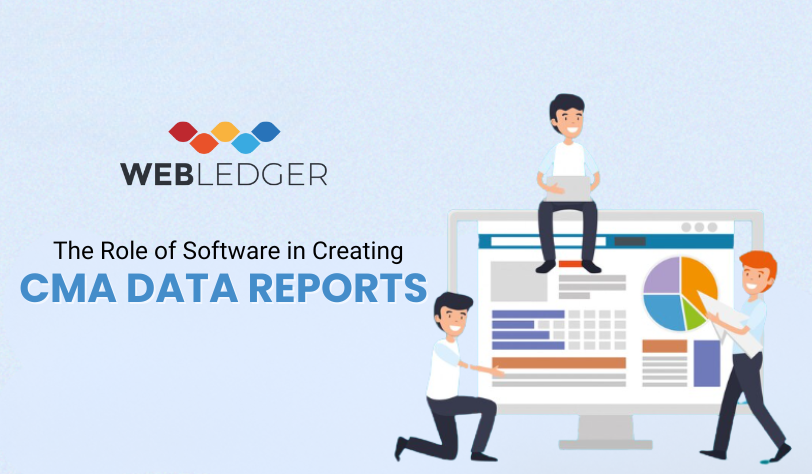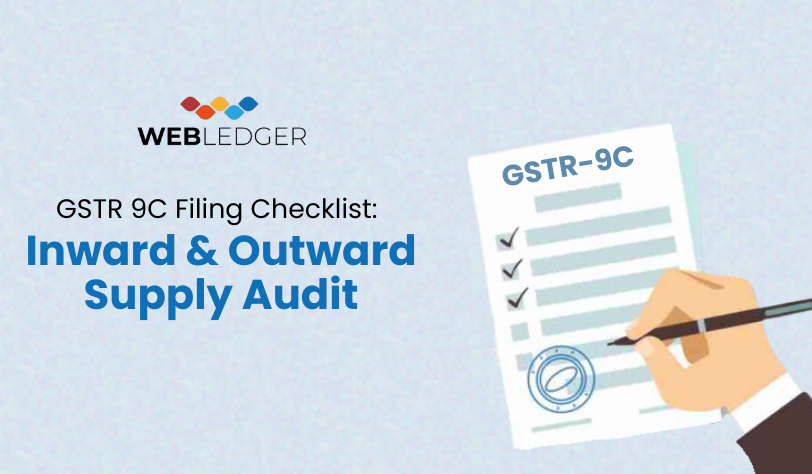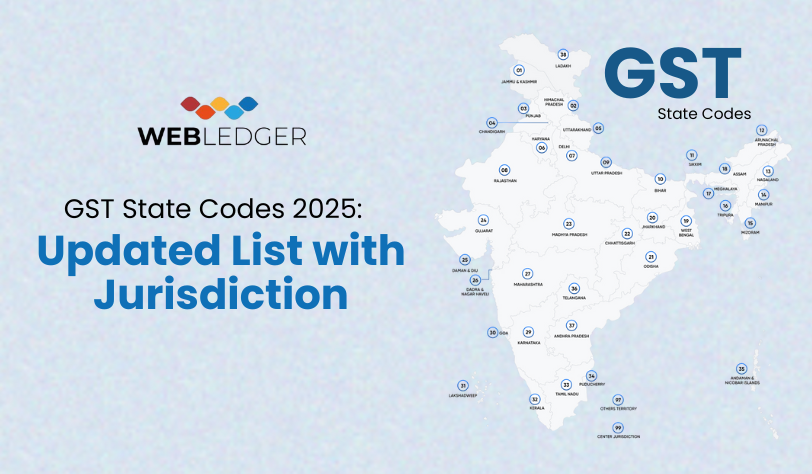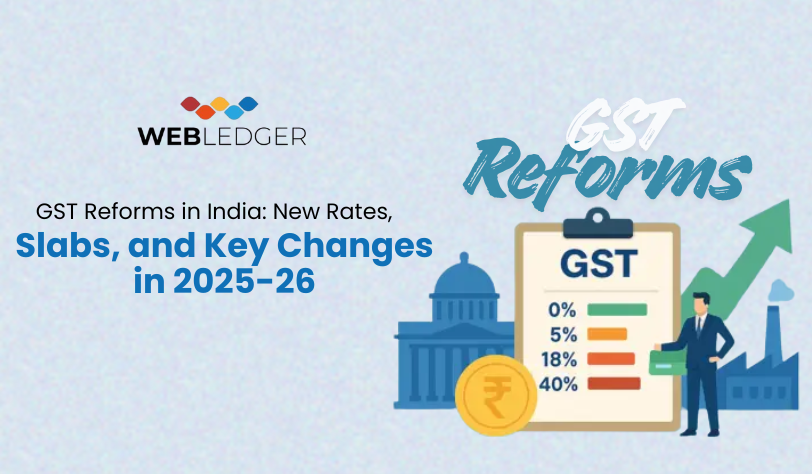The Role of Software in Creating CMA Data Reports
For businesses seeking financial aid, investors evaluating risk, and financial institutions managing loans, accurate and clear credit monitoring arrangement (CMA) reports are vital. Traditionally, the creation of these reports has been slow and prone to errors, involving manual data gathering, separate spreadsheet work, and complicated calculations.
Advanced software solutions, however, have changed the game when it comes to CMA reports. These tools are quite more efficient, accurate, and better analysed than the previous methods. This blog post highlights how software can make creating CMA reports easier and why particular CMA software with data reporting tools is beneficial for detailed and useful reports.
Significance of a CMA Report
Now, let’s gain some insight into the significance of CMA reports.
The significance of CMA reports should be understood prior to talking about the role of software. CMA report fundamentally covers a borrower’s past performance, projected financials, and other key financial ratios that are used to define a borrower’s financial health or credit to be provided to him in light of finances.
These have proved to be a useful tool for financers who run creditworthiness risk analyses and establish the loan terms before any loans are given to clients. They facilitate businesses that will raise capital or attract investors when coming up with a better understanding of company finance. CMA reports guide key stakeholders, such as management, regulators, and investors, in making more informed decisions.
Better Accounting
Please enter the OTP below to proceed.
Inclusions in a well-prepared CMA Report
A well-prepared CMA report should usually consist of:
- Executive Summary: This section gives a clear overview of the borrower’s financial situation. It will summarise the important findings from the report, highlighting key figures and setting the scene for the detailed analysis that follows. This helps stakeholders quickly understand the borrower’s overall financial health.
- Financial Statements: The CMA report creation incorporates detailed historical and projected financial statements. Generally, there are three major documents which are involved; these include the balance sheets, which indicate the assets, liabilities, and equity of the borrower at any point in time; the income statements showing revenues, expenses, and net income over any given period; and cash flow statements, indicating cash inflows and outflows, giving one an idea about the liquidity position and cash management practice of the borrower. Such statements can go a long way in explaining past performance and future expectations. This is the section that does important work as it computes and analyses major financial ratios that help evaluate the financial soundness of the borrower. These are,
- Profitability Ratios: These indicate how well the borrower generates money relative to sales, assets, or equity, return on equity, gross margin, interest coverage ratio etc.
- Liquidity Ratios: These evaluate the borrower’s capacity to service short-term obligations, (examples include, current ratio, quick ratio, acid-test ratio, etc.)
- Solvency Ratios: These assess the borrower’s ability to meet long-term obligations (e.g., debt-to-equity ratio).
- Efficiency Ratios: These indicate how effectively the borrower uses its assets to generate revenue (e.g., asset turnover ratio).
- Industry Analysis: An important close look is at the industry in which the borrower is operating. This will reveal the prevailing trends in the market, growth opportunities, competition, and risks that could affect the borrower’s operations. It helps all stakeholders understand how the borrower fits into the wider industry context and what macroeconomic factors may influence performance.
- SWOT Analysis: This part will provide a total evaluation of the strengths and weaknesses of the borrower as well as the opportunities and threats. This part will identify the Strengths, which are the special skills or benefits; Weaknesses, which show where there is room for improvement; Opportunities, like prospects for growth or new products; and Threats, which can be competitions or regulations. The whole view will help in planning and risk management.
- Management’s Discussion and Analysis (MD&A): This is a detailed narrative explaining the borrower’s financial performance. This section contains the management’s views on past results, reasons for major business decisions, and prospects for the future. The analysis frequently includes business operational efficiency, market conditions, as well as business strategy, adding more insight into the financial data provided.
- Assumptions and Projections: This section addresses the major assumptions behind the financial projection included in the report. These might be market conditions, pricing, cost structures, and growth rates, among others. It also explains the way financial statements are prepared, giving an insight into the level of transparency and credibility surrounding projections. This has been deemed one of the highly valuable pieces for the analysis of a borrower’s financial soundness and gives room for well-informed stakeholders regarding lending and investments.
Limitations in Traditionally Produced CMA Report
Traditional spreadsheet methods and tools associated with creating the CMA reports have limitations.
- Time Consuming: This involves collecting information from various sources and combining it while using complex formulas for analysis. This makes data entry and calculations susceptible to human errors, which can lead to inaccurate reports and poor decision-making. Limited analytical capabilities make it difficult to conduct thorough analyses and spot trends in a spreadsheet.
- Version Control Issues: Handling many versions of spreadsheets might create confusion and could lead to a loss of data.
How Software for CMA solves the Challenges?
Software for CMA, created exclusively for solving the issues mentioned above and provides tremendous advantages:
- Automation: CMA software tools automate the process of data collection, consolidation, and calculation. The generation of reports can be significantly faster with this approach. Importing data directly from accounting systems reduces manual entry and associated errors.
- Accuracy: The automation of calculations and minimal human intervention help ensure the accuracy of CMA data analysis solutions. Built-in validation checks can also be used to ensure data integrity.
- Standardisation: CMA software ensures that the template and formatting are standardised, allowing reporting to be done in a normalised fashion and making it easier to compare reports across the board.
- Sophisticated Analysis: Data analysis CMA solutions contain advanced analytical tools, which enables users to conduct thorough analyses, trend identification, and insightful reporting. The tools available include ratio analysis, financial forecasting, and sensitivity analysis.
- Better Communication: The majority of the CMA software features collaboration functionality where several users can read and write reports simultaneously, creating a sense of efficiency and great communication.
- Data Privacy: Proper CMA software tools sometimes have more extended data security elements, protecting sensitive financial details from unauthorised personnel.
- Centralised Data Management: They work as a centralised repository of all the CMA-related data and simplify the data management procedure along with providing consistent data.
- Better Decision-Making: These tools, through correct, timely, and insightful reports, help the business and financial institutes to make better decisions than earlier.
Essential Features of Ideal CMA Software Tools
When choosing CMA software tools, the following essential features need to be kept in mind.
- Data Import: Allows integration with any other accounting package and any external data sources.
- Automatic Computing: Pre-computation for key financial ratios and other useful metrics.
- Projection of the company’s finances: This is a facility for providing in-depth projections using the sensitivity analysis tool.
- Reports Output: Some pre-formatted templates that prepare CMA-type reports, such as P/L (profit and loss) statements, B/S (balance sheet) statements, and cash flow statements, with detailed ratio analysis.
- Customisation: Report templates and reports could be customised as per your desired requirements.
- Collaboration: Several users might work on the same report.
- Data Security: The solution will offer good security features in terms of safety for sensitive financial data.
- User-Friendly Interface: The interface has to be straightforward, simple, and not require much training.
- Scalability: Adapt to high volumes of data and user increase with a rising business while still being handled.
- Compliance: The software must be compliant with relevant accounting standards and regulatory requirements.
Selecting the Right CMA Software
The right CMA software depends on the specific needs and requirements of your organisation. Some of the key factors to consider are:
- Size and Complexity of the Business: More complex and larger businesses require more sophisticated software with advanced features.
- Industry-Specific Requirements: Some industries may have distinct reporting requirements the system should be addressed.
- Budget: This includes the cost of software, its implementation, etc.
- Interface with Current Systems: The ease with which the system possesses to fit into the accounting system and other systems already in use.
- User Friendliness: The ease of use and the training required to work with the system.
- Vendor Reputation and Support: The reputation of the vendor of the software and the level of customer support to provide.
Read more: Mastering Financial Compliance and Filing for CA, CS, and Tax Professionals
Conclusion
In the current business world, timely and accurate CMA reports are critical for informed decision-making. CMA software tools enhance the reporting process by automating data collection and report generation, improving efficiency and accuracy. The right data reporting software for CMA is critical to better financial management and long-term success. These tools provide deeper insight into financial health, helping businesses identify risks and opportunities. Proper selection of CMA software can help optimise the reporting process, giving the business an edge in the market.




